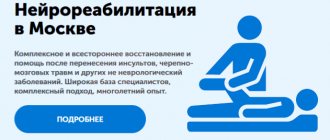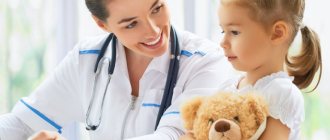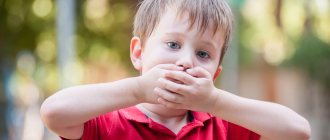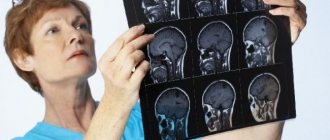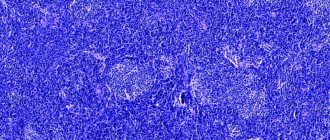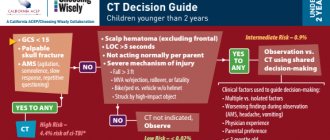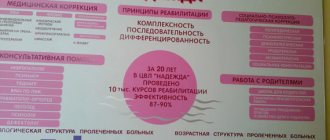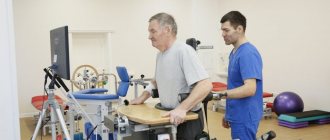Rehabilitation of cerebral palsy is carried out for all sick children; such a program will help return the child to a full life. It is carried out under the supervision of a doctor, the doctor assesses the degree of brain damage and selects the most effective methods. It will not be possible to get rid of the disease completely, but if you do all the exercises and training, you can regain lost functions: motor activity, speech and correct the psychological status. The most effective results are observed if rehabilitation of cerebral palsy is carried out in specialized centers.
It is better to start recovery in the early years, because at a young age a child’s brain is formed and actively developing. With this approach, it is possible to effectively compensate for the main disorders that arose during intrauterine development.
Forms of the disease
Cerebral palsy does not progress, because organic brain damage occurs during pregnancy. But in the absence of rehabilitation, these complications become permanent, and a person has to live with them all his life. The main signs of cerebral palsy are movement disorders, weakening of muscle tone, the appearance of pathological reflexes, and speech impairment. All these disorders can be significantly compensated for if a rehabilitation program is started in time.
Before starting treatment, the doctor determines the form of the disease:
- spastic diplegia - damage to the muscles of the back, legs and arms, rigidity of the lower extremities is more pronounced;
- double hemiplegia – the muscles of the arms are most affected, and mental retardation is observed;
- atonic-astatic type of pathology - deterioration of muscle tone throughout the body due to damage to the cerebellum and its pathways;
- hemiparetic form - unilateral lesion with predominant weakening of the upper extremities.
How is the rehabilitation of cerebral palsy carried out? – the first two forms are more amenable to correction than others, but with constant treatment and training, even with the most severe course of paralysis, good results can be achieved.
Rehabilitation of patients with cerebral palsy
Rehabilitation of children with cerebral palsy - principles and approaches
Cerebral palsy (CP) is a serious disease caused by brain damage in the perinatal period. Accompanied by impaired movement, impaired speech, intelligence, and vision. The peculiarities of rehabilitation for cerebral palsy are that the processes of structural and functional development of the brain are not yet completed. In this regard, the goal of rehabilitation is to stimulate the development of physiological functions, compensation of motor, speech and mental disorders. Therefore, rehabilitation of children with cerebral palsy is a complex, multifaceted process and includes the participation of a large number of medical specialists of different profiles.
Causes of cerebral palsy and clinical manifestations
The most common causes of cerebral palsy are:
- intrauterine development disorder
- brain hypoxia
- cerebral hemorrhages
- asphyxia during childbirth
- kernicterus
- infectious diseases in early childhood
Sometimes these reasons can be combined with each other. The main clinical manifestations are movement disorders, changes in muscle tone, hyperkinesis, mental retardation, hearing and vision impairment. There may also be secondary changes in the bone skeleton, deformations, and contractures.
There are 3 stages of cerebral palsy - early, initial chronic-residual, late residual. The earlier treatment is started, the more effective it is.
Five main clinical forms of cerebral palsy
- Spastic diplegia is characterized by a sharp increase in muscle tone in the legs.
- Double hemiplegia (tetraparesis) is cerebral palsy primarily affecting the arms.
- Hyperkinetic form - characterized by muscle rigidity, sometimes dystonia.
- Accompanied by slurred, slurred speech.
- Hemiplegic form - develops as a result of postnatal infection, is characterized by unilateral muscle damage, often speech disorders, and mental retardation.
- The atonic-asthenic form is characterized by muscle hypotonia, severe loss of coordination of movements, significant speech impairment, and mental disorder.
Stages of rehabilitation of children with cerebral palsy
A special feature of rehabilitation for cerebral palsy is that it is carried out in young children, with motor functions that have not yet developed, and the need to stimulate delayed functions in development. Early initiation of treatment is the key to success, since with advanced changes, movement disorders are less amenable to correction.
The first stage of rehabilitation begins immediately - in the neonatal pathology department. Depending on the nature and depth of the damage, this stage can last from 1 to 3 months. A set of measures at this stage is aimed at eliminating edema and increasing the supply of oxygen to the brain. Drug treatment, orthopedic styling, massage, and therapeutic exercises are carried out.
The second stage takes place after discharge from the department. Drug treatment, massage, and physical therapy continue. Also at this stage, physical therapy, orthopedic prevention, and pre-speech speech therapy training are included. Teaching parents child care skills is of great importance.
Sanatorium-resort treatment is important in the rehabilitation of such patients, since there are few specialized medical institutions in our country. The effectiveness of rehabilitation depends on continuity of observation. Children with severe mental disorders are placed in specialized children's homes, where rehabilitation treatment and basic skills training are also provided.
Methods of rehabilitation of patients with cerebral palsy
Rehabilitation of children with cerebral palsy includes:
- massage
- physical therapy
- hardware physiotherapy
- balneo and peloid therapy
- orthopedic measures
- occupational therapy, pedagogical approach aimed at intellectual and mental development
We will consider physical therapy and hardware physiotherapy methods in more detail. But since the number of methods of hardware physiotherapy is large, we will consider them in a separate material. In the meantime, we will continue to consider the basic directions and fundamentals of rehabilitation of children with cerebral palsy.
Physiotherapy
It is the most important factor in recovery, which has virtually no contraindications and can be used throughout the entire treatment. Such children are prescribed not only, and not so much, physical exercises. Games and therapeutic choreography are actively used. B. Bobat's method has proven to be the most effective. The technique involves going through all stages of a child’s neurophysical development, regardless of current age.
Lightweight games are recommended for healthier children. They conduct special exercises that train impaired movements, as well as household stands with buttons, bells, switches, and light bulbs. This approach allows you to develop self-service skills.
The method of choreographic gymnastics is one of the forms of group classes. Helps improve the emotional background, improves coordination of movement and spatial orientation, allows you to normalize the coordination of movements of the legs, arms, and body.
Hydrokinesitherapy
It is worth mentioning separately the method of exercise therapy, which involves performing physical exercises in warm water. At the same time, the weight of the limb, muscle spasticity decreases, the range of movements and coordination increases. Exercises in the pool with hyperkinetic form can be used for learning to walk.
Massotherapy
Massage plays a major role in the treatment and recovery of children with cerebral palsy. It improves blood supply, tissue trophism, muscle tone, and also increases range of motion.
Massage usually begins with impact on the segmental zone: cervical-collar (C6 - Th2) before massage of the upper extremities; lumbosacral before impact on the lower extremities.
To improve breathing and blood circulation, a massage of the chest and back muscles is performed.
Acupressure is performed to reduce muscle tone before therapeutic exercises. The end phalanx of 2-3 fingers is used to influence certain biological points. A massage course, depending on the condition and indications, may include up to 20 procedures.
Orthopedic treatment
Aimed at preventing and eliminating contractures and deformities, as well as creating the correct spatial position of the child. Includes special styling during rest and sleep hours, step-by-step correction of contractures using plaster splints and circular bandages. For persistent contractures, surgical treatment is performed, but not earlier than 3 years of age. For a patient with cerebral palsy, it is optimal to have orthopedic shoes, an apparatus for daytime use, and therapeutic splints for sleep.
Psychotherapy and psychological rehabilitation
Of course, a disease such as cerebral palsy has a serious impact on the psyche of children. Especially in children of school age and older, with preserved intelligence. They realize the severity of their condition, as a result of which they experience changes in the psycho-emotional sphere.
The main principle of education for cerebral palsy is the development of maximum independence, self-care and learning skills. In an institution or in individual treatment, it is necessary to create an appropriate deontological environment, stimulating every movement and every new action. An important element is family psychotherapy - conversations and sessions with parents. Psychological rehabilitation is also facilitated by bibliotherapy with a special selection of books and music therapy.
SIGN UP FOR A CONSULTATION IN NOVOSIBIRSK:
Physiotherapist, osteopath, rehabilitation specialist Karasenko V.P. City Clinical Hospital No. 25 of Novosibirsk.
Recovery stages
The first steps in the treatment of cerebral palsy are the most difficult - the child has lesions in the cerebral structures, which cause motor impairments. In the future, it will be easier to cope with pathology; as neural connections are restored and formed, it will be easier for the nervous system to adapt to new conditions.
There are several stages of recovery; such rehabilitation is carried out for cerebral palsy from an early age. It includes:
- preparing the nervous system for upcoming loads and movements;
- biomechanical effects to destroy neural connections and restore muscle tone;
- consolidation of the results obtained, stabilization of coordination of movements and self-care.
The second stage is the most difficult; many difficulties arise during this period. A complete restructuring of the nervous system is coming - the child will actually have to learn to walk again, talk normally and deal with stress.
Objectives of complex treatment
Children's in Moscow provides a full range of medical and rehabilitation services for the treatment of cerebral palsy. We can provide therapy for the comprehensive recovery of a child or teenager.
We use effective methods against the development of pathologies that arise in the perinatal period.
The essence of the deviations lies in the incompleteness of the structural and functional development of the brain. Specialists use methods to stimulate physiological skills. The purpose of this intervention is to restore mental, motor and speech abilities.
To achieve the intended result, it is necessary to develop and implement a complex, multi-stage plan. Among the primary tasks of the medical team at our cerebral palsy rehabilitation center are:
- Elimination of pathological tonic reflexes.
- Strengthening relaxed and stretched tissues.
- Restoration of muscle tone.
- Activation of breathing function.
- Help with hypertonicity and hyperkinesis.
- Relaxation of spastic areas.
- Increased performance.
- Development of coordination, balance, walking.
- Normalization of muscle mass.
Recovery methods
Rehabilitation methods for children with cerebral palsy are varied, they include ongoing treatment, physical therapy and training. Medicines are used as basic therapy, exercises and procedures help develop new skills and consolidate the results. To obtain a pronounced effect, the impact must be complex and targeted, therefore, to prescribe a program, you should contact specialized centers. A doctor in such an institution will be able to observe the patient and, if necessary, adjust rehabilitation.
Some statistics
The annual comparative analysis of the main performance indicators of our institution testifies to its stability and strengthening authority.
During the operation of our center, more than 52,000 patients were accepted for treatment, including citizens of Russia, former CIS countries and 56 foreign countries. Treatment according to the method of Professor V.B. More than 6,000 patients from Serbia, Spain, Mexico, Poland, Romania, Czech Republic, Slovakia, Bulgaria, Slovenia, Bosnia and Herzegovina, Croatia, Montenegro, Macedonia, Turkey, Hungary, USA, Italy, Germany, Austria, Greece, France received Ulzibat. Great Britain, Sweden, Israel, Latvia, Lithuania, Estonia, Lebanon, Morocco, Egypt, Argentina, Peru, Venezuela, Finland, Australia, Canada, Morocco, India, China, etc.
According to statistics, among all patients of the institute, 83% were children. In our clinic, children receive surgical treatment mainly for congenital orthopedic diseases (torticollis, clubfoot, joint deformities) and cerebral palsy (CP), adults more often turn to our institution in connection with acquired pathology of the nervous and musculoskeletal systems, chronic pain syndromes of various localizations.
Patients with cerebral palsy made up 88% of all patients at the clinic, children predominated among them (88%). The largest number were children aged 4 to 7 years (42%). Patients with double hemiplegia (43%) and spastic diplegia (37%) predominated, with severe and moderate degrees of movement disorders. There were children who walked on their toes with difficulty, and there were patients who experienced slight difficulty walking, running, and jumping. But more than 60% of patients before surgery moved only with assistance or did not move at all. These are the same children from the group with “low rehabilitation potential” who are often denied any help as unpromising and hopeless. We do not refuse help to almost anyone, only in case of severe decompensated concomitant diseases.
Hydrotherapy
This method is used in the process of pediatric rehabilitation to improve motor abilities and sensory activity. The rehabilitation room has a swimming pool with different depths, it is equipped with parallel bars and other auxiliary elements for therapeutic exercises. All classes are held individually: the therapist works with the child and at the same time teaches one of the parents. This helps improve the child-parent relationship, increase confidence levels and develop new motor abilities.
Classes are held for the purpose of:
- walking training;
- reducing spasticity;
- strengthening and development of muscles and joints.
Treatment effectiveness
According to statistics, after a course of surgical treatment at our institute, on average, 97% of patients experienced an improvement in motor development, a decrease in stiffness and pain. A particularly striking effect was observed in children with cerebral palsy, in whom, after surgery, 52% developed new motor skills: sitting, crawling, walking, running, jumping; self-care skills.
In addition to improving indicators of motor development in cerebral palsy, according to a survey of parents and patients themselves, after operations on the facial muscles (temporal, masticatory) additional positive effects were noted: improvement in speech (62%), chewing (49%), swallowing (50% ), facial expressions (22%), emotional and behavioral indicators (64%), sleep (49%), appetite (58%); reduction of strabismus (55%), salivation (56%), increase in visual acuity (17%) and hearing (15%). In 35%, skills (speech, chewing, swallowing) appeared in their initial absence, and normalization of function occurred (disappearance of strabismus, drooling). Surprisingly, there are children who began to speak words and sentences for the first time within a few hours after surgery on the facial muscles, throwing parents into shock and causing tears of joy.
The development of new skills after our operations occurs differently in different patients: some develop new motor skills (one or several) quite quickly (a few months after treatment); For some, these skills, independent or with outside help, appear at a later period and develop more gradually; For some, movements become freer and improve within the limits of the initial level of motor development. In any case, an important goal is achieved - to restore and improve the effect of conservative rehabilitation, which is lost at some stage in the course of the disease as motor disorders progress.
According to our observations, the most pronounced effect of our treatment was observed in children aged 3-7 years due to the fact that in older children, changes in the structure of muscles and the musculoskeletal system in general are more pronounced.
Return to list
A virtual reality
This is an artificial world in which a child can identify himself and perform various actions, in other words, this is a real world that obeys the same laws of physics, only in virtual reality.
Artificial intelligence monitors changes that occur in the virtual world and provides the patient with new data and tasks for action. This therapy opens up great possibilities. The system is able to individually adapt to each patient, helping the doctor in the process of patient rehabilitation.
There are more than enough advantages of such virtual therapy, which actually helps patients, including:
- artificial intelligence perfectly adapts to the capabilities and characteristics of each patient, providing exercises that he can do;
- the ability to change the difficulty level of exercises;
- helps to measure the patient’s performance in exercises and use this data to develop further exercises for rehabilitation;
- patients are very happy and friendly about activities in the virtual world, which undoubtedly affects the general condition of the patient;
- in fact, entertainment contributes to patient care.
About possible reasons
When parents first learn that their child has been diagnosed with cerebral palsy, numerous questions arise:
- what reasons led to the development of the disease;
- whether the child will be able to walk independently;
- to what extent his motor and mental capabilities will be limited;
- whether he will need outside help;
- what measures, in what volume, sequence and duration need to be carried out so that the degree of restriction of functions in the future is minimal;
- does rehabilitation always give a positive result and is it mandatory;
- Is it possible to completely cure the disease?
Unfortunately, even an in-depth examination will not allow an unambiguous answer to these questions due to the fact that the prognosis of the disease largely depends on the period of exposure to the damaging factor, the cause of development, the volume and severity of the child’s brain damage; forms and severity of cerebral palsy; time of diagnosis, timely start of treatment and its systematicity; the presence of concomitant pathology, age characteristics and adaptive capabilities of the patient.
Among the unfavorable factors, the impact of which can lead to cerebral palsy in a child: acute chronic diseases of the mother during pregnancy (somatic, infectious), professional and household hazards (smoking, alcohol, stress, chemical agents, radiation, electromagnetic radiation); pathology of the period of childbirth (premature, rapid, operative birth; placental abruption, entanglement of the umbilical cord around the fetal neck, obstetric aids, etc.); congenital anomalies of the fetal brain, severe traumatic and infectious brain lesions (encephalitis) in the first months of a child’s life.
Due to the influence of these factors, oxygen starvation (hypoxia) develops in the organs and tissues of the fetus (including nervous and muscle tissue), metabolism is disrupted, and cell death or damage occurs.
Sensory Integration
This therapy takes place in a special room – a snoezelen. The room is a multi-sensory environment designed to either stimulate or suppress the patient's core senses through music, various scents, colors, images and other sensory objects.
The environment is controlled, the patient is left to his own devices and has the right to manage his own time and enjoy the environment around him. In such a room, all 5 human senses can be active. The environment can be adjusted and adapted to a specific patient, which has a very effective effect on rehabilitation as a whole.
Sensory integration has the following goals:
- relaxation, pleasure and rest without the interference of the patient’s intellect and expectations from surrounding people, there are no failures in the environment;
- treatment of psychosomatic disorders;
- reduction of aggression, stress and depressive mood;
- activation of all human senses (vision, touch, hearing, taste, smell);
- increased concentration;
- the ability for people with disabilities to respond to stimuli in the created environment or, conversely, to limit the patient from certain ones;
- helps the patient understand and recognize his body in a specific space, improve the coordination of the body in movement in relation to the created environment and space;
- reduction of self-stimulation.
The ultimate goal of being in such an environment is complete sensory integration and the development of the ability of the central nervous system to respond to sensory information, process it and transmit it to the brain through the senses for the body's further response to surrounding objects and environment. This therapy is suitable for both children and adults.
Bobath method
This method of neurodevelopmental treatment was named after its creators, Bertha and Karel Bobath. The approach to treating patients with cerebral palsy is based on knowledge and development of the nervous system and its pathologies:
- sensory-motor;
- emotional and social development of young children;
- perceptual;
The program is completely individualized and applied exclusively by the hands of a therapist. The focus is on natural sensory nutritional feedback and musculoskeletal control training.
The principles of treatment are:
- learning to sense movement;
- motor pattern training;
- facilitating the natural movement pattern and inhibiting pathology;
- setting goals, taking into account the stage at which motor ability is, the age and abilities of the child, always occurs in close connection with the family;
- assistance in the development of normal motor skills of the child;
The success of achieving goals affects the development of the child’s fine motor skills and speech. Close cooperation with the family is a must.
Basic mechanisms of muscle tissue damage
Doctors of our institute, with the participation of independent experts, as well as employees of other institutions, conducted comprehensive scientific and practical research. It has been established that a long-term local or general increase in muscle tone (hypertonicity, spasticity) in various diseases of the nervous and musculoskeletal systems, including cerebral palsy, leads to chronic disturbances of blood circulation and metabolic processes in skeletal muscles, and contributes to the development of dystrophic changes in them. In the future, when spasticity persists or increases, for example during the period of active growth of a child, in most cases an irreversible change in the structure of skeletal muscles occurs, the replacement of part of the muscle fibers with areas of compacted connective (scar) tissue, which is called fibrosis. Muscle areas with fixed shortened and thickened scar areas that do not disappear when the muscles relax and are painful on palpation are called organic muscle contractures. The presence of scar degeneration of muscle tissue in cerebral palsy is confirmed by scientific research by independent specialists (Dyakova V.N. 2007; Vlasenko S.V. 2014) using ultrasound and electron microscopic examination of muscles, needle electromyography. We have found that the process of fibrosis in the child’s muscles can begin already in the prenatal period with a complicated pregnancy or the presence of acute and chronic diseases in the mother (Gridasov E.V. 1998).
The chronic course of diseases occurring against the background of muscle hypertonicity is due to the fact that as the disease develops, dystrophic changes capture new areas of muscles, scar tissue gradually thickens and shortens over time, becomes poorly extensible, interferes with normal contraction and relaxation of muscles, compresses blood vessels and nerves, causing or increasing pain, stiffness, and restriction of movement in the joints. As a rule, the more pronounced muscle hypertonicity is due to the underlying disease, the earlier and faster the change in the structure of muscle tissue and the development of scar tissue occurs.
In this case, damage to skeletal muscles can occur both under the direct influence of pathological factors on them (infectious, traumatic, metabolic, vascular), and indirectly due to diseases of the nervous system, spine, joints, internal organs, when prolonged tension of certain muscle groups occurs and chronic local pain syndrome.
PADOVAN method
This method is also called neurofunctional reorganization of the brain. It is based on the human neurological system, on neuralgia of the development of speech, walking, thought processes, on neuroplasticity of the brain and development through the formation of new synapses.
During a PADOVAN session, several methods are combined: occupational therapy, physiotherapy and logotherapy. Exercises are used for the upper and lower extremities to promote speech learning, coordination of body movements, swallowing and breathing.
The method is effective in treating children:
- with developmental delays;
- with dyslexia;
- with learning problems (reading, numeracy and writing;
- with attention disorders;
- with the presence of hyperactivity.
Medicines
Medicines are used mainly at a younger age, when problems with muscle tone are observed. Next, the drugs are prescribed as maintenance therapy to eliminate complications. Psychological disorders are also treated.
The doctor may prescribe the following medications:
- to stimulate muscle tone: Mydocalm, Baclofen, Dysport;
- medications to improve cerebral circulation: Piracetam, Lucetam, Biotredin;
- vitamins and mineral supplements to strengthen the body.
The doctor adjusts the dosage according to the child’s condition and the effectiveness of the therapy. Taking medications without a doctor's prescription is not recommended.
Exercise therapy
Therapeutic exercises help restore lost functions, normalize tone and prevent muscle wasting. It is recommended to perform exercises from an early age - this will help you quickly cope with weak tone and restore self-care.
The following program is recommended:
- physical exercises with a trainer - to develop a specific muscle group;
- kinesitherapy - “treatment with movement” and constant physical activity;
- mechanotherapy – performing approaches on specialized simulators in rehabilitation centers.
The main feature of the rehabilitation of children with cerebral palsy is that the effect appears only with systematic training. That is why you need to fully follow all the doctor’s recommendations and engage in physical therapy.
About the method of Professor Valery Borisovich Ulzibat
For about 30 years, at the non-governmental medical institution JSC Institute of Clinical Rehabilitation (Tula), specialized orthopedic surgical treatment has been successfully carried out using the unique method of the Honored Inventor of the Russian Federation, Doctor of Medical Sciences, Professor V. B. Ulzibat. This method is called “staged fibrotomy,” which literally means “dissection of the scar.” The method allows you to achieve the desired result on an outpatient basis by eliminating scar tissue with a special scalpel in any superficial skeletal muscles of the head, neck, torso, and limbs; simultaneously, operations are performed on different muscle groups, taking into account their interaction. The operations are performed without an incision on the skin, locally in the scar area, with the preservation of healthy muscle tissue, there is no complete intersection of the muscles, there is no impact on the tendons and bones. After the operation, plaster immobilization is not required; care for postoperative wounds is simple and accessible to everyone. The institute operates on the principle of a “one-day surgical hospital,” which facilitates faster recovery in the patient’s usual home conditions.
The indication for surgery, along with the identification of scars in the muscles during examination, is the lack of effect from previous conservative therapy and the administration of botulinum toxin. There are no absolute contraindications to surgery related to the age of the patients, the presence of compensated congenital and acquired diseases and conditions, concomitant chronic diseases, delayed physical and mental development, convulsive and hyperkinetic syndromes.
The course of surgical treatment includes several stages. Planning of each subsequent stage occurs jointly between doctors and patients (parents of patients), based in each case on knowledge of the individual characteristics of the course of the disease in a particular patient, depending on his age, clinical diagnosis and severity of the disease, the presence of concomitant pathology. Treatment is provided to patients depending on their age and the volume of operations under general or local anesthesia.
Neurostimulation
This method uses weak currents to stimulate neurons in the brain and spinal cord. This makes it possible to reduce the activity of inhibition in cerebral structures and resume motor activity. Using this method, it is possible to cope with chronic pain and paresthesias, which often arise as complications of cerebral palsy.
The decision to perform neurostimulation is made by the doctor based on the child’s condition. Such therapy is considered successful if it helps eliminate half of all complications.
Physiotherapy
Physiotherapeutic treatment is used as a complement to primary therapy; such procedures strengthen the body. They increase tissue regeneration, activate blood flow in muscles, bones and joints, improving cellular nutrition.
Modern methods of treating cerebral palsy include sessions of the following procedures:
- electrical stimulation;
- magnetic therapy;
- warming up;
- light therapy
Treatment is carried out in courses of 10-15 sessions. You need to visit the office strictly on schedule and not skip physical therapy. A referral can be obtained from a pediatrician or a specialized rehabilitation center.
Possibilities of modern medicine
Children with the same form and severity of cerebral palsy differ from each other in their motor skills, psyche, and adaptive capabilities, so the rehabilitation process proceeds differently for each child. The collegial selection of an individual rehabilitation program requires the participation of many specialists: a neurologist, an orthopedist, a physiotherapist, a physical therapist, an epileptologist, a neurosurgeon, a psychiatrist, a speech therapist, a psychologist, a psychotherapist, a defectologist, a medical geneticist, and teachers.
According to statistical data, the structure of cerebral palsy is dominated by spastic forms (80-88%), in which the leading manifestation of the disease is spasticity (increased muscle tone, muscle hypertonicity): tetraparesis, diplegia, hemiparesis. Therefore, various approaches to the treatment of cerebral palsy currently existing in Russia are aimed at correcting movement disorders, primarily in spastic forms.
Traditional methods of rehabilitation treatment for cerebral palsy include:
- methods of physical rehabilitation, including massage, therapeutic exercises, the use of special simulators (Lokomat, Armeo, etc.) and load-bearing suits (Adele, Gravistat, Atlant, Phaeton, etc.); rehabilitation equipment (walkers, risers, strollers, etc.);
- drug therapy (muscle relaxants, nootropic and vascular drugs, antioxidants, vitamins, anticonvulsants, etc.);
- physiotherapy (electrical and phototherapy; laser and magnetic therapy; electrical myostimulation, thermal, mud and water treatments, etc.);
- neuromuscular blockades using botulinum toxin A preparations (Botox, Dysport);
- orthopedic treatment: conservative and surgical;
- conductive pedagogy, computer play therapy, occupational therapy;
- neurosurgical treatment (posterior selective rhizotomy, chronic epidural electrical stimulation of the spinal cord; implantation of a baclofen pump, neurotomy, stereotactic operations).
Orthopedic treatment for cerebral palsy is a conservative orthopedic correction, including staged casting and selection of various external devices (orthoses, devices, splints, splints, collars, corsets, shoes, insoles, etc.) to support weak muscles and joints, and surgical methods , which involve various surgical interventions on muscles, tendons, joints and bones to restore range of motion in joints and eliminate persistent deformities of the musculoskeletal system (MSD).
Alternative methods of treating cerebral palsy include: reflexology (acupuncture, acupuncture), methods of traditional and modern Chinese medicine, manual therapy, osteopathy, yoga, hippo and dolphin therapy, kinesio taping, stem cell treatment. There is no reliable assessment of the effectiveness and safety of these methods yet, although parents of patients with cerebral palsy report positive changes in the motor sphere of their children when using these methods in complex rehabilitation.
Any method of treating cerebral palsy has its own indications and contraindications, advantages and disadvantages. In addition, it is not always possible, even for an experienced specialist, to fully assess the possible consequences when using different treatment methods simultaneously in a particular patient. There are likely to be discrepancies between theoretical and/or experimental studies and clinical practice, and there is a danger of using insufficiently tested treatments. Sometimes more modern treatment methods conflict with previously developed ones, which can reduce the effectiveness of rehabilitation. Moreover, in different regions of Russia and in different medical institutions, their own approaches to restorative treatment are used as a priority: in some places pharmacotherapy is preferred, in others the use of drugs is minimized or completely eliminated; someone calmly uses painful treatment methods, while others consider this unacceptable; some advocate early surgical correction, others call for refusing operations even if there are vital indications.
Visit to a psychologist
Working with a psychologist is an important support for a child, which will help with social adaptation. The doctor conducts conversations and finds out what worries the patient in the first place. Game techniques, trainings and questionnaires are used. The program is selected individually according to leading methods for children with cerebral palsy.
During rehabilitation, the emphasis is on physical activity, but without overcoming psychological problems and barriers, it will be difficult for the child to return to social life. Only an integrated approach will consolidate the results obtained.
The importance of spa treatment
Sanatorium-resort treatment is an important stage in the rehabilitation of children with cerebral palsy. Firstly, leaving home helps the child change his surroundings, gain new positive emotions, and establish contacts with peers. Most sanatoriums are located in environmentally friendly areas, which is especially useful for children living in big cities. Rest allows you to strengthen the immune system; after returning home, the child gets sick much less often.
The most important part of treatment in a sanatorium is the opportunity to use various physiotherapeutic procedures under the close supervision of specialists. The resorts use the following methods:
- electrotherapy;
- magnetic therapy;
- laser therapy;
- ultraviolet irradiation;
- ultrasound therapy;
- balneology;
- hydrotherapy;
- mud therapy.
Some sanatoriums offer dolphin therapy, hippotherapy, and use proprietary techniques (Bobat, Voight therapy). The mandatory treatment program includes exercise therapy, massage, and, if necessary, drug treatment.
The most famous sanatoriums in Russia and neighboring countries:
- "Forest Glade" in Stavropol region;
- “Gorky Lake” in the Kurgan region;
- "Anapa";
- "Amursky" in the Khabarovsk Territory.
There are sanatoriums on the Black Sea coast, in Odessa, Saki, Evpatoria. There is a sanatorium in Truskavets, where rehabilitation is carried out using Kozyavkin’s original method.
Forecasts
Rehabilitation of cerebral palsy depends on the form of the disease and the degree of brain damage. Usually, when therapy is carried out from an early age, the prognosis is relatively favorable - most disorders can be compensated for by primary school age. With a mild form of pathology, the manifestations of cerebral palsy will be almost invisible.
If you delay therapy and do not follow the doctor’s recommendations, the prognosis will be unfavorable. This is a child’s mental retardation and serious dysfunction of the musculoskeletal system. In case of cerebral palsy, parents and children are required to take a responsible approach and implement a rehabilitation program.
Effective rehabilitation for cerebral palsy
The basis of helping children with developmental disabilities is an interdisciplinary approach. It requires the involvement of a competent team of specialists, including a speech therapist, pediatrician, traumatologist, orthopedist, speech pathologist, psychologist and other doctors.
.
Rehabilitation of cerebral palsy includes a course of physical therapy, physiotherapy, massage, reflexology, classes with a speech therapist, psychologist, neuropsychologist, various techniques of complementary medicine, which have proven themselves in the complex therapy of cerebral palsy. Classes are conducted regularly at an optimal level of intensity. Parents and other relatives are trained in proper child care and introduced to the features of home rehabilitation exercises.
Treatment of cerebral palsy involves conducting classes to strengthen muscles, develop verbal skills and social adaptation. Most classes are conducted in a playful way. The child becomes more independent and adapted to everyday life. Positive results after therapy sessions increase patient motivation.
